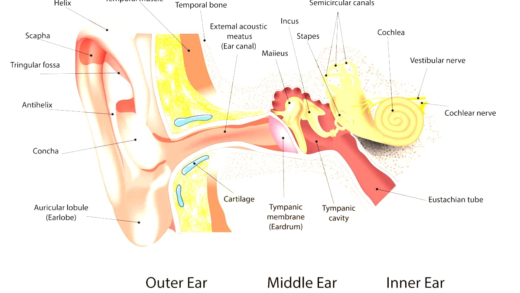Heart attacks can lead to cardiac arrest due to damage to the heart muscle affecting its electrical function. Preventive measures include a healthy diet, regular exercise, and stress management. Treatment for heart attacks involves medications and procedures, while cardiac arrest requires immediate CPR and defibrillation.
What is a Heart Attack: Explaining the Basics
Heart attack, also known as myocardial infarction, occurs when blood flow to a part of the heart is blocked. This blockage can be due to a buildup of fat, cholesterol, and other substances, forming a plaque in the coronary arteries. When the blood flow is interrupted, the heart muscle can become damaged or die.
The implications of a heart attack are significant. It can lead to severe complications, including heart failure or even death. Recognizing the symptoms early is crucial for survival. Common signs include:
- Chest pain or discomfort
- Shortness of breath
- Pain in the arms, back, neck, jaw, or stomach
- Nausea or lightheadedness
Timely medical intervention can save lives, so understanding what a heart attack is and its implications is essential.
What is Cardiac Arrest: Clear Definitions
Cardiac arrest is a sudden loss of heart function, breathing, and consciousness. Unlike a heart attack, which is a circulation issue, cardiac arrest is an electrical problem. It occurs when the heart’s electrical system malfunctions, leading to an irregular heartbeat (arrhythmia) or stopping altogether.
Recognizing the distinction between heart attack and cardiac arrest is vital. While a heart attack can cause cardiac arrest, they are not the same. Key differences include:
- Heart Attack: Blocked blood flow to the heart muscle.
- Cardiac Arrest: Electrical malfunction in the heart.
Understanding these definitions can help in responding effectively to each situation.
Symptoms of a Heart Attack: How to Recognize Them
Recognizing the symptoms of a heart attack is crucial for timely intervention. Symptoms can vary between individuals, but common signs include:
- Chest discomfort, often described as pressure, squeezing, or fullness.
- Pain or discomfort radiating to the shoulders, neck, arms, or back.
- Shortness of breath, which may occur with or without chest discomfort.
- Other signs like nausea, cold sweat, or lightheadedness.
Being aware of these symptoms can help individuals seek immediate medical help, significantly increasing the chance of survival.
Symptoms of Cardiac Arrest: Quick Identification
Cardiac arrest symptoms can develop suddenly and require immediate action. Key signs include:
- Sudden collapse or loss of consciousness.
- No pulse or breathing.
- Unresponsiveness to stimuli.
Understanding these symptoms is critical. If someone experiences these signs, calling emergency services and starting CPR can be life-saving. Quick identification and action are key to increasing survival rates in cardiac arrest cases.
Causes of a Heart Attack: What Triggers It?
A heart attack, or myocardial infarction, is primarily caused by a blockage in the coronary arteries. This blockage is often due to the buildup of fatty deposits, cholesterol, and other substances, known as plaque. When this plaque ruptures, it can lead to a blood clot that completely obstructs blood flow to a section of the heart muscle. Several factors can trigger a heart attack, including:
- Coronary Artery Disease: The most common cause, where arteries narrow over time.
- High Blood Pressure: Increased pressure can damage arteries and promote plaque buildup.
- High Cholesterol Levels: Excess cholesterol contributes to plaque formation.
- Smoking: Damages blood vessels and accelerates plaque buildup.
- Diabetes: Increases the risk of coronary artery disease.
- Obesity: Excess weight contributes to high blood pressure and diabetes.
- Lack of Physical Activity: Inactivity can lead to obesity and heart disease.
Understanding these causes is crucial for prevention and early intervention. Recognizing risk factors can help in making lifestyle changes to reduce the likelihood of a heart attack.
Causes of Cardiac Arrest: What You Should Know
Cardiac arrest is often caused by electrical disturbances in the heart. These disturbances can lead to fatal arrhythmias, where the heart beats irregularly or stops beating altogether. Key causes of cardiac arrest include:
- Coronary Artery Disease: The same condition that leads to heart attacks can also cause cardiac arrest.
- Heart Attack: A heart attack can trigger cardiac arrest by disrupting the heart’s electrical system.
- Cardiomyopathy: A disease of the heart muscle that can cause arrhythmias.
- Electrolyte Imbalances: Abnormal levels of potassium or magnesium can affect heart rhythm.
- Drug Overdose: Certain drugs can disturb heart rhythm, leading to cardiac arrest.
- Congenital Heart Defects: Structural heart issues present from birth can increase risk.
Awareness of these causes is essential for recognizing high-risk individuals and implementing preventive measures.
What to Do During a Heart Attack: Step-by-Step Guide
If you suspect someone is having a heart attack, immediate action is crucial. Here’s a step-by-step guide on what to do:
- Call Emergency Services: Dial your local emergency number immediately.
- Keep the Person Calm: Encourage them to stay calm and sit down.
- Loosen Tight Clothing: Help them breathe easier by loosening any tight clothing.
- Chew Aspirin: If they’re not allergic, chewing aspirin can help thin the blood.
- Monitor Symptoms: Keep track of their symptoms and be ready to give information to responders.
Timely response can save a life, so understanding these steps is vital.
What to Do During Cardiac Arrest: Essential Actions
Cardiac arrest is a medical emergency requiring immediate intervention. Here’s how to respond:
- Call Emergency Services: Immediately dial for help.
- Start CPR: Begin chest compressions at a rate of 100-120 compressions per minute.
- Use an AED: If available, use an Automated External Defibrillator as soon as possible.
- Continue CPR: Keep performing CPR until emergency responders arrive.
- Stay Calm: Your calmness can help others remain composed during the crisis.
Recognizing these steps can increase survival rates in cases of cardiac arrest.
Can a Heart Attack Lead to Cardiac Arrest?
Heart attack can indeed lead to cardiac arrest. This connection arises because when a heart attack occurs, the heart muscle may not receive enough blood and oxygen, causing it to function improperly. In some cases, this can disrupt the heart’s electrical system, resulting in a cardiac arrest. Key points to note include:
- A heart attack can cause damage to the heart muscle, leading to arrhythmias.
- Arrhythmias can result in cardiac arrest, where the heart stops beating effectively.
- Timely treatment of a heart attack can prevent progression to cardiac arrest.
Understanding this relationship emphasizes the importance of recognizing heart attack symptoms early and seeking immediate medical help.
Prevention of Heart Attacks and Cardiac Arrest: Tips for a Healthier Life
Preventing heart attacks and cardiac arrest is crucial for maintaining cardiovascular health. Here are effective preventive measures:
- Maintain a Healthy Diet: Eating plenty of fruits, vegetables, whole grains, and lean proteins can help reduce the risk of heart disease.
- Exercise Regularly: Engaging in at least 150 minutes of moderate aerobic activity weekly can strengthen the heart.
- Avoid Smoking: Quitting smoking significantly lowers the risk of heart problems.
- Manage Stress: Practice stress-reducing techniques like yoga, meditation, or deep breathing exercises.
- Regular Health Check-ups: Regular visits to a healthcare provider can help monitor blood pressure, cholesterol, and overall heart health.
Implementing these tips can lead to a healthier lifestyle and significantly reduce the chances of experiencing a heart attack or cardiac arrest.
Treatment for Heart Attack vs Cardiac Arrest: What’s Different?
Treatment approaches for heart attacks and cardiac arrest differ significantly due to their nature. Here’s a comparison of the two:
- Treatment for Heart Attack: Typically involves medications such as aspirin, thrombolytics to dissolve clots, and procedures like angioplasty or stenting to restore blood flow.
- Treatment for Cardiac Arrest: Requires immediate CPR and the use of an Automated External Defibrillator (AED) to restore a normal heart rhythm.
- Both conditions require quick response, but the methods and urgency differ greatly.
Understanding these treatment differences can prepare individuals to act effectively in emergencies involving heart conditions.





Comments are closed.